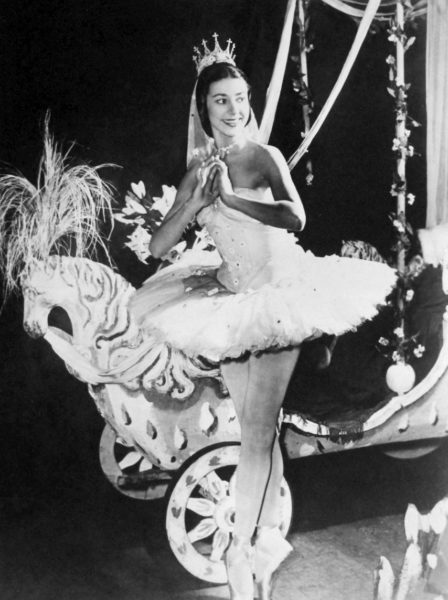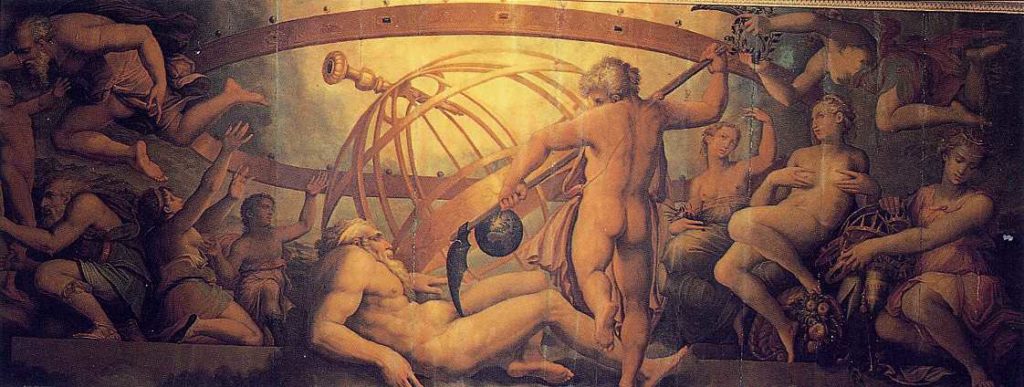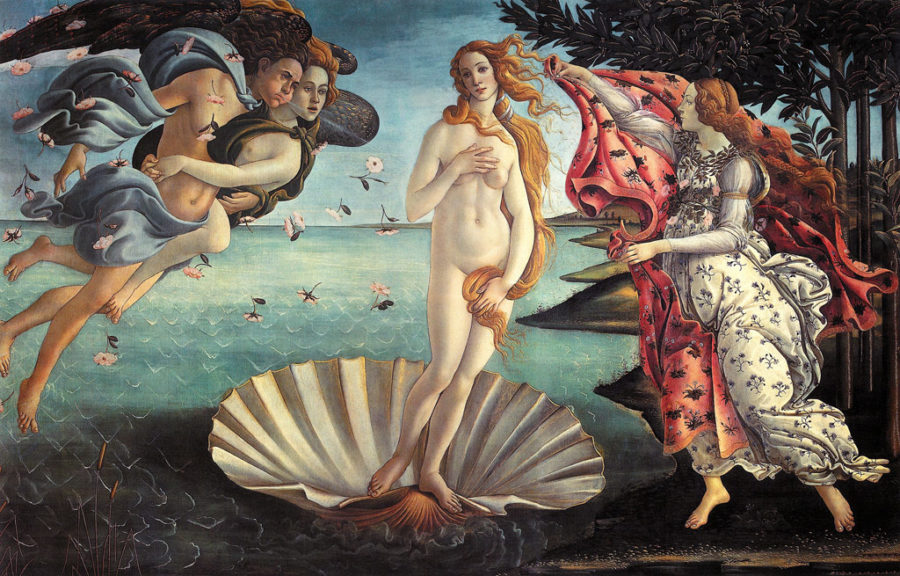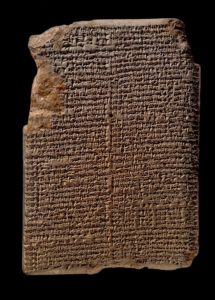
Mercury and Uranus are on the same wavelength…
They like things to happen rapidly, be innovative, inspiring, fun and exciting. When Mercury and Uranus combine forces, life is an adventure of discovery and creativity, if they spot a way to spice it up, give it a new twist – that’s exactly what they will do!
Mercury Trine/Sextile Uranus
A trine is considered a positive aspect, and indicates ease and flow in the relationship between planets, no effort is needed to manifest the energies involved. A sextile is also quite harmonious, it encourages and brings the opportunity to manifest the energies, but they require more work to produce results.
Mercury is mind – thoughts, ideas and the communication of them -the accumulation, clarification and distribution of information. Mercury is also motion, indicative of both intellectual wanderings and physically from place to place.
Uranus discovered in 1781 is considered the modern ruler of air sign Aquarius, the traditional ruler is Saturn. Uranus’ discovery occurred at the time the Industrial Revolution was underway (approx 1760-1840), just after the American Declaration of Independence (1776) and slightly before the French Revolution (1789-99) – in keeping with his characteristic need to disrupt and shake things up, bring about innovation and rebellious demands for freedom.
Rapid Communication & Mental Dexterity
A trine or sextile between Mercury and Uranus will produce natives who think and communicate rapidly. Thoughts may flicker smoothly and instantly from one subject to another. Natives may make random connections that lead to insightful ta-dah moments – the mental leaps involved in this process may leave others a little bit bemused but make perfect sense to the native!
Intellectual talents or gifts are a real potentiality. There is mental dexterity here, along with a strong tendency to think outside the box, be experimental and innovative – some ideas will indeed be truly awesome, others perhaps shocking. Natives could be skilled with science, maths or technology – equally, due perhaps to an innate intuition, astrology or occult subjects may be fascinating and an area of potential expertise.
For Mercury trine/sextile Uranus natives communication – through both the spoken or written word – could flow with ease. An ability to be witty and clever, direct and straight to the point. However they may at times lack tact, they tend to be precise and freely honest about their thoughts, unconcerned about how they are greeted. Some will find natives exhilarating, others may see them as too outspoken and overly candid.
As these people are inwardly always on the go, sifting through and exploring perhaps several chains of thought at once, they can be restless, easily excitable and possibly in certain circumstances readily feel unsettled or become impulsive. It can be quite challenging for them to unwind and chill out, they enjoy mental stimulation and this energy likely sparks bodily action too. There is an abundance of effervescent, zingy energy that perhaps has to be (or is best) burnt off through physical effort to avoid feeling tense, agitated or jumpy.
Natives will be drawn to what is new, innovative, fresh and exciting. A spirited, adventurous approach to life, a need to push boundaries, freedom to explore whatever catches their fancy and a love of being different to others – will plausibly all be prominent traits. Anything or anybody that they find dull, dreary or boring they will likely have a strong aversion to and try and avoid.
The Art of Motion

On the list of famous natives below, it is striking and noteworthy that it includes some of the greatest tennis players and dancers of all time. Mercury is mind and motion, Uranus stimulates and adds an electrifying influence to Mercury. Both disciplines involve the mind and body working in unison with lightning fast reflexes, along with the necessity to continually adjust between feathery lightness and explosive power. The art of motion – being created and performed instantaneously.
Bjorn Borg, Ilie Nastase, Martina Navratilova and Venus Williams are all former world number 1’s, with multiple tennis Grand Slam titles to their name. Ilie Nastase was a real crowd-pleaser, flamboyant and unpredictable, who would entertainingly and amusingly question line calls and rulings. But sometimes Ilie could have more volatile, temperamental outbursts, hence he was nicknamed both the “Bucharest Buffoon” and “Nasty” Nastase.
Mikhail Baryshnikov and Margot Fonteyn are considered two of the greatest ballet dancers of all time. Of course Mikhail Baryshnikov also famously defected from communist Russia to Canada in 1974 – in a Uranian rebellion against the constraints and restrictions imposed upon him. Mikhail’s urge for freedom and independence meant he successfully escaped and evaded his KGB guards after a performance with the Bolshoi Ballet in Toronto to reach a waiting get-away car.
“I am an individualist and there it is a crime” ~ Mikhail Baryshnikov to the New Statesman ~ biography.com
MERCURY TRINE URANUS NATIVES
Charles Darwin 0 02′ Elsbeth Ebertin 0 09′ Roald Dahl 0 13′ Nicolas Cage 0 27′ Neale Donald Walsch 0 34′ Russell Crowe 0 36′ Abraham Lincoln 0 37′ Stephen Hawking 0 44′ Mikhail Baryshnikov 0 51′ Venus Williams 1 16′ Barbara Hand Clow 1 17′ Marilyn Manson 1 41′ Janet Jackson 1 42′ Robert P Blaschke 1 50′
MERCURY SEXTILE URANUS NATIVES
Liberace 0 00′ Pierce Brosnan 0 02′ Peaches Geldof 0 06′ Mickey Rourke 014′ Hermann Hesse 0 17′ Che Guevara 0 18′ Sia Furler 0 18′ Thomas Jefferson 0 19′ Bjorn Borg 0 23′ Aaron Spelling 0 23′ John Major 0 23′ Johannes Brahms 0 28′ Paulo Coelho 0 28′ Vivienne Westwood 0 31′ Charles Dickens 1 04′ Margot Fonteyn 1 15′ Geri Halliwell 1 17′ Martina Navratilova 2 31′ Ilie Nastase 3 28′
Mythology
The signs and planets all have rich and varied mythological stories spun around them. Exploring mythology, using the tales as tools, helps enhance understanding and insight into the astrology.
Mercury

In Greek Mythology Mercury was known as Hermes. His father was Zeus (Jupiter) and his mother was Maia, a daughter of Atlas, and the eldest of the seven Pleiades. Within hours of birth, Mercury, precocious and clever, invented the lyre, a musical instrument created from the shell of a tortoise. The music he made delighted everyone who heard it. On the same day Mercury stole his half-brother the Sun god Apollo’s prized cattle, demonstrating his skills for enterprising mischief – as a trickster and thief!
Jupiter, whilst impressed and entertained by Mercury’s intelligence, ordered Mercury to return the cattle to Apollo. Mercury also gave the lyre to Apollo; which became a symbol of Apollo as god of music – peace is made and a friendship begins between the brothers. In return for the lyre Apollo gave Mercury the caduceus – a staff with two snakes entwined around it topped with wings – and the role of psychopomp, the guide of souls between this world and the next. Mercury could move freely between this world the earth, the underworld and Mt Olympus.
Mercury was mentally and verbally gifted, extroverted and incredibly swift in all ways – in his mind and motion from place to place. All this occurred whilst he was still a baby!
In Mythology Mercury is obviously male, but mind itself is neither male or female, good or bad – mind is free to be whatever it wishes and go wherever it chooses. Highlighting this, by astrological tradition Mercury is androgynous, neutral; and in a natal chart the direction mind takes is to an extent coloured by aspects to other planets.
Uranus
In Greek Mythology Uranus was Ouranos, the sky god, the first father of the gods. The earth herself was created first – Gaia, Mother Earth – from the void. Gaia then birthed the mountains, the sea and the sky – Uranus – who she took as her consort. From the sky Uranus poured rain upon Gaia causing her to be fruitful and colourful with trees, flowers and vegetation. Uranus and Gaia were the parents of the Titans – one of whom was Kronos (Saturn), the Hecatoncheires and the Cyclopes.
In time Uranus became tyrannical, he imprisoned some of his children within Gaia, fearful they may take away his power and envious of Gaia’s love for them. Saturn was their youngest child, and Gaia upset, angry, and in pain, waited until Saturn grew strong enough, then Gaia armed Saturn with a sickle and persuaded him to castrate Uranus.

When Saturn cuts off Uranus’ testicles they fall in the ocean, where his creative seed gives birth to Venus – the goddess of love and beauty. Where Uranus’ blood fell onto the earth the Giants, the Meliai and the goddesses of vengeance and retribution – the Furies – were created. Uranus was about to mate with Gaia when Saturn carried out his act of violence and mutilation, resulting in both love and its opposite, anger – induced by suffering, unjustness and betrayal – being created and unleashed in the world.
Whilst many myths portray Uranus as jealous and cruel, his innate essence and traits meant he found himself in a difficult position when dealing with his offspring, and essentially can’t help but act in accordance with his nature. Uranus’ children – produced from his raw, creative power and the intense attraction between him (the sky ~heaven) and Gaia (mother earth) – like himself, were rebellious and challenging. Some were monstrous, the Hecatoncheires had one hundred hands and the Cyclopes were giant one-eyed monsters. Uranus found them repellent, flawed, in comparison to his vision and ideals; thus preferred to detach himself from them and lock them away out of sight.

Uranus did not die after being emasculated – although Saturn became the supreme power – Uranus was still the sky. But Saturn – astrologically the planet associated with boundaries, order and earthly reality – does bring about the separation of heaven and earth. Uranus also prophesied that Saturn would, like himself be overthrown by his own son. Causing Saturn to repeat his father’s behaviour out of fear and eventually see the prophecy come true when he was overthrown by Jupiter.
Anu
In Sumerian and Babylonian Mythology Uranus was Anu, the personification of the sky or heavens. In certain myths Anu is said to be the father of Inanna/Ishtar (Venus). In the Epic of Gilgamesh Anu gives his daughter Inanna/Ishtar the Bull of Heaven so that she can send it to attack Gilgamesh.
The Song of Kumarbi
In Hittie Mythology, The Song Of Kumarbi tells how Anu was overthrown by his son Kumarbi (Saturn) who bit off his father’s genitals. Amu impregnates Kumarbi with three offspring, he spits out two, but remains pregnant with a son – Teshub (Jupiter). Kumarbi (like Saturn) was later deposed by his son Teshub, who collaborated with his grandfather Anu to accomplish this outcome. Whilst Anu was emasculated, he still retains his strength, it is Kumarbi who is diminished, and appears more emasculated than Anu. This myth is believed to be the basis of the story of Ouranos and Kronos in Hesiod’s Theogony.
The Mul.Apin
The origins of astrology lie in Mesopotamia, and the earliest astrological records are Babylonian The Enuma Anu Enhil are clay tablets inscribed in cuneiform, detailing astrological omens and predictions (some of the omens date back to around 1646 BCE). It begins “When the Gods Anu and Enhil…”
Anu, is the god of heaven and Enhil, the god of earth, revealing that astrology was the sphere of these two gods; conveying the connection and union between the realms of heaven and earth.
The Babylonian astrologers divided the heavens into three, the paths of Anu, Enhil and Ea the gods of heaven, earth and water. The astronomical knowledge they discovered around the constellations and the fixed stars along these paths are contained in the Mul.Apin (dated around 1000 BCE or earlier).

What is fascinating, given Uranus is one of the planets considered to symbolise astrology, and Uranus’ connection to Anu, is that these three paths, the Path of Anu being the middle one, relate to what we now know as the ecliptic. The Mul.Apin detailing the zodiac constellations, opened the way for the signs of the zodiac and the ecliptic to be revealed.
“The Mul.Apin gives a list of all the stars in the ‘path of the Moon,’ that is, stars that lie in the apparent path along which the Moon moves through the sky. As Professor Bartel Leendert van der Waerden notes, ‘the text states explicitly that not only the Moon, but also the Sun and other planets move in the ‘Moon’s path’ defined by these constellations.’ The list of eighteen constellations is given in the text. It seems that this number of constellations used to mark the ‘Moon’s path’ gradually fell to twelve – the same twelve that later became the signs of the zodiac.” ~ Astrology in Ancient Mesopotamia, by Michael Baigent, page 172-3
Somewhere around the 5th Century BCE the planets begin to be established in zodiacal signs rather than constellations.
“a tablet dated 454 BCE mentions ‘Mercury’s last appearance in the east in the end of Aquarius'” ~ Astronomical Diaries, by Sachs and Hunger, 57, line 2
TAROT
MERCURY ~ The Magician ~ GEMINI ~ The Lovers ~ VIRGO ~The Hermit
URANUS ~ The Fool ~ AQUARIUS ~ The Star
References
Astrology in Ancient Mesopotamia by Michael Baigent
Kumarbi ~ Wikipedia
Top Image from Unsplash by Aziz Acharki
Margot Fonteyn – Cinderella – 1957 ~ from Wikimedia Commons
Primavera – Mercurio: Botticelli ~ from Wikimedia Commons
The Mutilation of Uranus by Saturn: Giorgio Vasari ~ from Wikimedia Commons
The Birth of Venus: Botticelli ~ from Wikimedia Commons
Mul.Apin – British Museum ~ from Wikimedia Commons